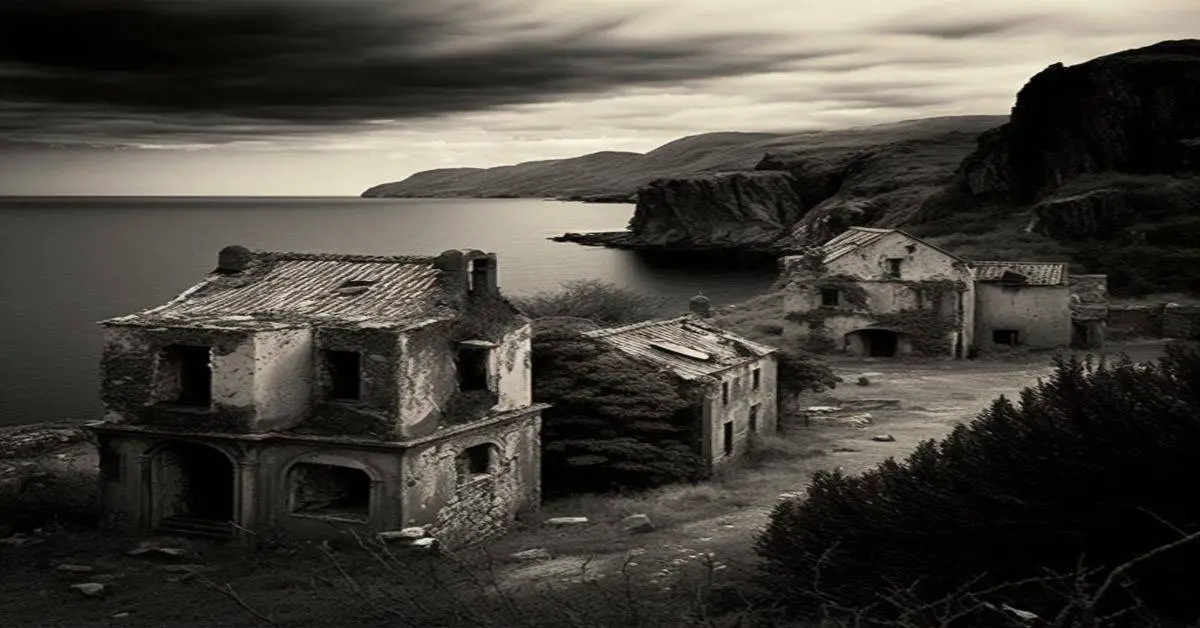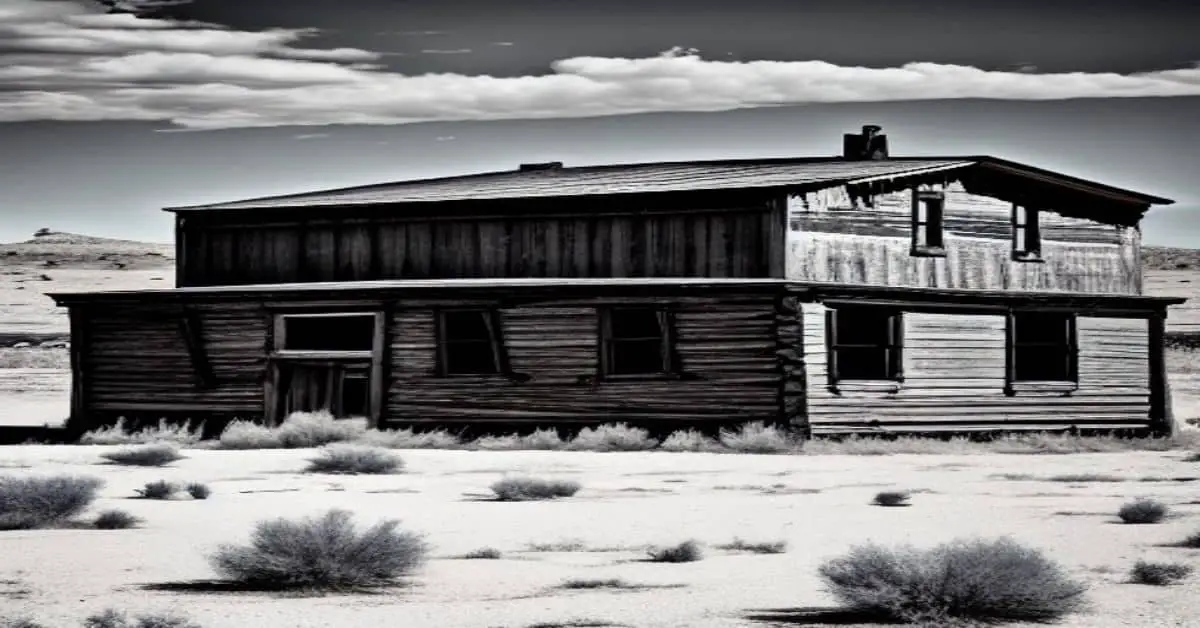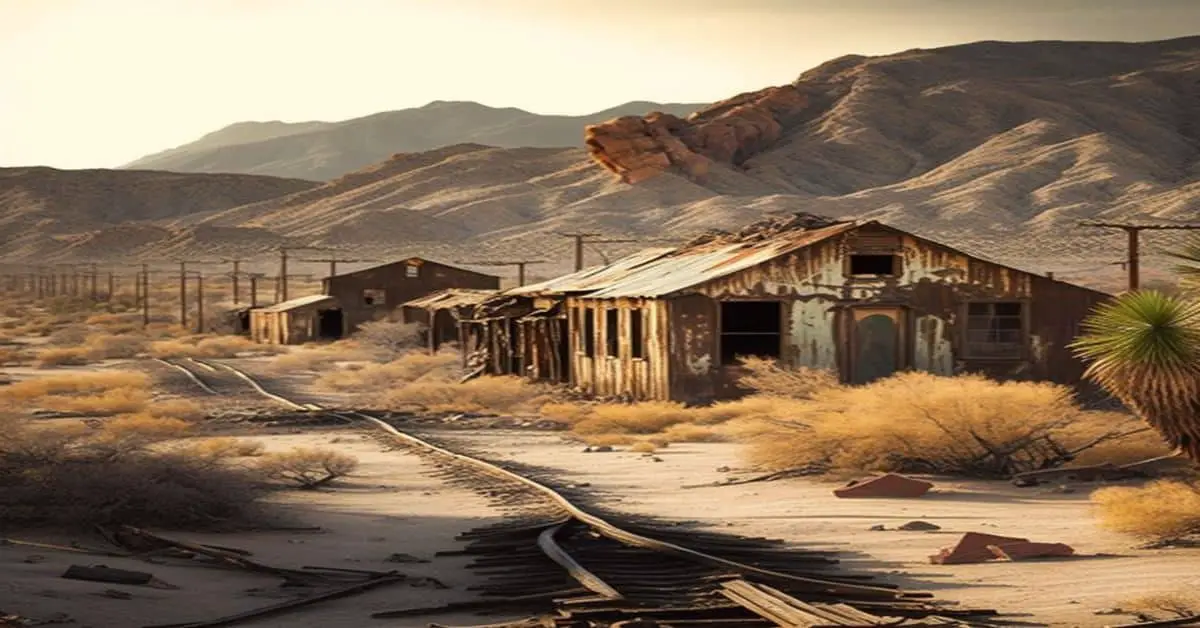Nestled in the heart of Arizona lies the abandoned ghost town of Agua Caliente, once a luxurious destination featuring a 22-room hotel and natural hot springs. With its warm winter and hot summer climate, visitors can explore the remains of the hotel, adobe and stone ruins of cabins and outbuildings, and the pool that once attracted guests from all over. This forgotten gem stands as a testament to the changing landscape and the impact of human development on the environment.
Agua Caliente has a rich history dates back to the late 1800s when it was first established as a resort destination for those seeking the healing properties of its natural hot springs. Over the years, the resort expanded to include a hotel, cabins, and outbuildings, attracting guests nationwide. However, with the advent of irrigation, the hot springs eventually dried up, and the resort was left to decay.
Today, visitors can explore the remains of this once-luxurious destination and uncover its storied past. In this article, we will delve into the history and remains of Agua Caliente, Arizona and the present-day caretakers who work to keep its memory alive.
Key Takeaways
- Agua Caliente was an abandoned ghost town in Maricopa County, Arizona, established as a resort destination for those seeking the healing properties of its natural hot springs in the late 1800s.
- The town’s demise followed the drying up of the hot springs due to irrigation, and visitors can now explore the remains of the hotel, adobe and stone ruins of cabins and outbuildings, and the pool that once attracted guests from all over.
- Visitors can hike or bike the trails, enjoy a scenic drive, or visit the Hassayampa River Preserve, home to diverse wildlife, including the threatened Southwestern Willow Flycatcher.
- The present-day caretakers work to keep the memory of Agua Caliente, Arizona alive, ensuring that visitors can experience the town’s remnants for years to come, and the ruins provide a unique and educational experience for visitors to Arizona, revealing a unique piece of the state’s history and the impact of human development on the environment.
Location and Climate
The pre-existing knowledge reveals that Agua Caliente is a ghost town in Maricopa County, Arizona, approximately 12 miles north of Sentinel. The region experiences a warm winter and hot summer climate, making it best to visit during fall, winter, or spring.
Visitors to Agua Caliente can explore the remains of the 22-room hotel built in 1897, the adobe and stone ruins of cabins and outbuildings, and the pool.
In addition to the abandoned luxury of Agua Caliente, the surrounding area offers plenty of outdoor activities and nearby attractions. Visitors can hike or bike the nearby trails, enjoy a scenic drive, or visit the nearby Hassayampa River Preserve.
The preserve is home to a diverse range of wildlife, including the threatened Southwestern Willow Flycatcher, and offers opportunities for birdwatching, nature photography, and more.
History and Remains
Historical remnants of a 22-room hotel built in 1897, adobe and stone ruins of cabins and outbuildings, and a pool attest to the existence of a once-thriving community in the town of Agua Caliente, now a ghost town, in Maricopa County, Arizona.
Exploring the ruins of this abandoned luxury provides a glimpse into the past, revealing a unique piece of Arizona’s history. The town’s significance lies in the hot springs that once existed in the area. The hot springs were a major attraction for tourists, and the hotel was built to accommodate visitors seeking the therapeutic benefits of the natural springs.
However, the hot springs dried up due to irrigation, and the town’s demise followed. Despite this, the remains of Agua Caliente have survived into the present day, a testament to the resilience of the town’s structures.
The ruins offer an opportunity to explore the past, understand the hot springs’ significance, and appreciate this once-luxurious community’s history. Caretakers are present to ensure the preservation of the ruins, making it possible for visitors to experience the town’s remnants for years to come.
Present-day Caretakers
Caretakers are responsible for preserving the ruins in Agua Caliente, ensuring that visitors can explore the remnants of the once-thriving community for years to come. Their duties include daily maintenance of the site, such as cleaning and repairing the adobe and stone ruins of cabins and outbuildings, as well as the hotel. They work to ensure that the pool, which is a popular attraction, is well-maintained and safe for visitors to use. Additionally, they are responsible for the safety of visitors and ensuring that they follow the site’s rules.
The caretakers also play a crucial role in providing information to visitors about the history of Agua Caliente and the importance of its preservation. They share stories about the luxury hotel that once stood in the community, the hot springs that used to exist, and the impact of irrigation on the community’s demise.
Through their efforts, the caretakers help visitors understand and appreciate Agua Caliente’s rich history and significance.
Frequently Asked Questions
What was the original purpose of the hot springs at Agua Caliente, Arizona?
As a result of geothermal energy, the original purpose of the hot springs at Agua Caliente was to provide a luxurious spa experience for guests. However, the hot springs dried up due to irrigation, leading to the resort’s decline.
Are there any plans to restore or re-open the hotel to the public?
There is no current plan to restore or re-open the Agua Caliente hotel to the public. Funding challenges and historical preservation efforts are potential discussion topics. The hotel remains closed and caretakers are present.
Who were some notable guests or visitors to Agua Caliente during its time as a resort?
Agua Caliente, a once-exclusive resort in Arizona, hosted famous guests such as Theodore Roosevelt and John Wayne. The 22-room hotel featured architectural features such as adobe and stone ruins, a pool, and hot springs that have since dried up due to irrigation.
How did local ranchers’ irrigation practices contribute to the hot springs’ drying up?
Local ranchers’ irrigation practices caused Agua Caliente’s hot springs to dry up. The increased water usage for farming led to a decline in the water table, impacting the hot springs’ flow and ultimately contributing to their disappearance.
Are there any haunted legends or stories associated with Agua Caliente, Arizona?
Agua Caliente lacks any documented haunted tales or supernatural rumors. Despite its ghost town status, there have been no reports of paranormal activity or ghostly sightings, and the caretakers present have not reported such occurrences.


